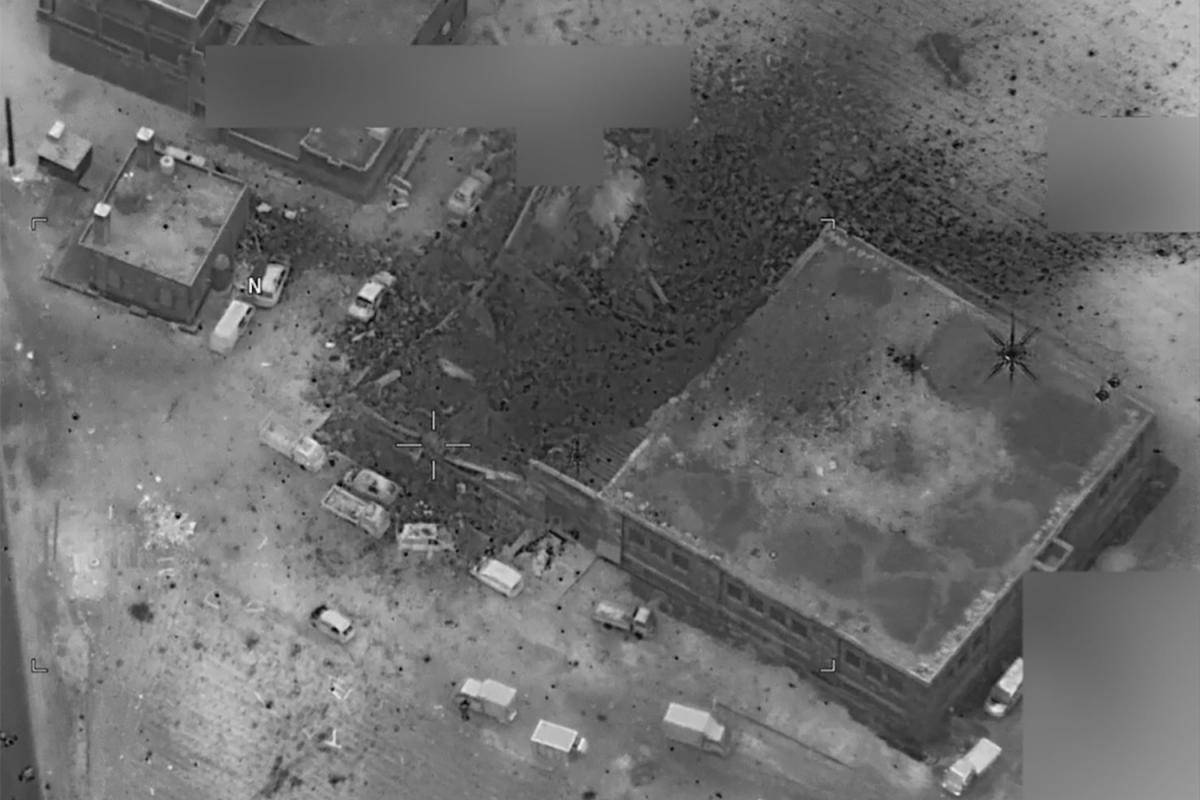Authorities Failed to Take Necessary Precautions
(Washington, DC) – United States forces appear to have failed to take necessary precautions to avoid civilian casualties in a March 16, 2017 strike that killed at least 38 people in western Aleppo in Syria, Human Rights Watch said in a report released today.
The 16-page report, “Attack on the Omar Ibn al-Khatab Mosque: US Authorities’ Failure to Take Adequate Precautions,” found that statements by US military authorities after the attack indicate that they failed to understand that the targeted building was a mosque, that prayer was about to begin, and that a religious lecture was taking place at the time of the attack. A proper analysis of the target and its use would probably have established at least some of these elements. Human Rights Watch has not found evidence to support the allegation that members of al-Qaeda or any other armed group were meeting in the mosque.
“The US seems to have gotten several things fundamentally wrong in this attack, and dozens of civilians paid the price,” said Ole Solvang, deputy emergencies director at Human Rights Watch. “The US authorities need to figure out what went wrong, start doing their homework before they launch attacks, and make sure it doesn’t happen again.”
US authorities have said they will investigate both whether civilians were killed in the attack and whether the building hit was part of a complex belonging to a mosque. The US government should make public the detailed findings of its investigation, provide adequate redress to civilian victims or their families, and hold those responsible for the attack to account.
Human Rights Watch interviewed by phone 14 people with firsthand knowledge of the attack, including four who were in the mosque at the time of the attack. In carrying out the investigation, Human Rights Watch used some of the research provided by the open source investigative group Bellingcat, which analyzed video footage and photographs from the attack, and Forensic Architecture, which created models of the mosque and a reconstruction of the attack. However, Human Rights Watch, Bellingcat, and Forensic Architecture conducted separate investigations into the attack.
At about 7 p.m. on March 16, US aircraft attacked a location southwest of al-Jinah, a village in western Aleppo province. US military authorities have acknowledged that they carried out the strike, saying that they targeted a meeting of al-Qaeda members.
While US officials acknowledged that there was a mosque nearby, they claimed that the targeted building was a partially constructed community hall. But information from local residents, photographs, and video footage of the building before and after the attack show that the targeted building was also a mosque. Local residents said that the mosque was well-known and widely used by people in the area, and that dozens, if not hundreds, of people were gathering in the building at prayer times. While the mosque did not have a minaret or a dome, aerial surveillance should have shown the people gathering. Any attempt to verify through people with local knowledge what kind of building this was would likely have established that the building was a mosque.
US authorities also appear to have inadequately understood the pattern of life in the area. A US official said that the attack happened after evening prayer had concluded, implying that civilians had left the area. While it is not clear which prayer the official referred to, the sunset or night prayer, US statements show that the attack took place at about 6:55 p.m., just 15 minutes before night prayer on that day. Even if US authorities believed that the targeted building was a community hall, the knowledge that prayer was about to start was relevant because they knew that another mosque was nearby. Information about prayer times is easily accessible online and should have been well-known by US authorities.
Local residents said that it was well-known in the area that the religious group in charge of the mosque was holding religious lectures in the targeted building every Thursday between sunset prayer and evening prayer, around the time of the attack. Any attempt to gather information about the targeted building from people with local knowledge might also have alerted US authorities to this fact.
Human Rights Watch has not found evidence to support the allegation that members of al-Qaeda or any other armed group were meeting in the mosque. Local residents said that no members of armed groups were at the mosque or in the area at the time of the attack. The residents said that the victims were all civilians and local residents. First responders said the dead and injured wore civilian clothes and that they saw no weapons at the site. US authorities have released no information to support their claims that members of armed groups were in the mosque.

Source: HRW






